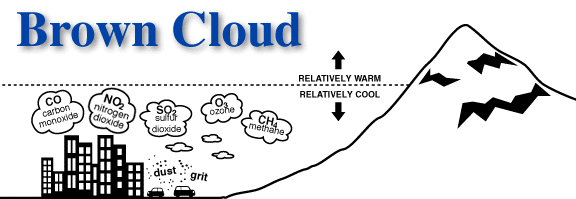
Certain kinds of weather, especially in the winter, help cause what is known as the brown cloud, a yellowish-brown strip visible along the eastern horizon. It is produced by emissions from cars, industry, and agriculture along the Front Range, especially in the South Platte River valley near Denver.
The brown cloud forms through an inversion, a shallow pool of relatively cool air near the ground that is separated from warmer air aloft. The more shallow the pool, the more concentrated the pollutants and, typically, the more vivid the brown cloud. Above the inversion, the air may be quite fresh and the visibility high.
Trapped inside the brown cloud are a variety of pollutants. Some are
invisible, such as methane, yet they may still be toxic--for instance,
carbon monoxide and ozone. Other pollutant include
oxides of nitrogen and sulfur and tiny particles of grit and dust that
help give the cloud its brown color.
On some days, Boulder Valley is inside its own brown cloud that makes the
view in all directions appear hazy.